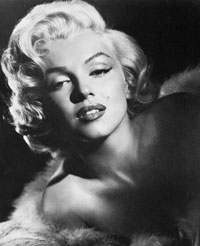
Last April, I was honored to be invited as one of the speakers in the inaugural TEDx Fenway event. Organized by the Fenway Cultural Alliance, the program celebrated the first anniversary of the official designation of the Fenway Cultural District in Boston. The theme of the day was "The Ecology of a Great City," with speakers asked to comment on the necessary ingredients--social, political, artistic, spiritual--that create the special and unique alchemy of a grand metropolis. I offered my thoughts in this whimsically titled but seriously considered piece. -Tony Woodcock
I would like to invoke someone very unpopular and much maligned, criticized, denounced in many places -- Sigmund Freud. (When I mentioned Freud to a colleague several days ago, she responded, "Oh, that's SO 100 years ago.") But I would compare Freud to Homer, Shakespeare, Montaigne, Cervantes, someone who really understood the human psyche. And I think Freud's best discovery may well have been to differentiate childhood as a distinct period of life, rather than as the life of a young adult.
I will use Freud's analysis of the psyche as the basis for understanding the construct of the City and how important and integral is the place of the arts within this structure.
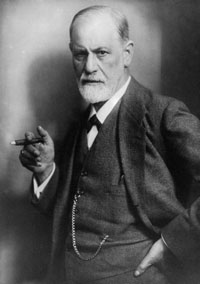 You will recall that Freud identified three parts of the psyche:
You will recall that Freud identified three parts of the psyche:
First of all, there is the Id -- our most authentic childlike self, creative, passionate, artistic, full of desires and impulses all driven by the pleasure principle. If you've ever been with a three year old or a famous orchestral conductor for an afternoon that is sheer Id.
Then, there's the Super-Ego: the absolute opposite of the Id. It deals with right/wrong. it's irrational in its choices, realistic, guilt-driven and intent upon controlling the excesses of the Id. The Super-Ego promotes the tyrannical imperatives of the "should."
And then there's the poor old Ego, caught between the powers and opposition of the Id and Super-Ego, and trying really, really hard to find a balance. It converts sex and aggression into a more acceptable expression of the Id, and modifies the Id into artistic expression.
 As human beings, we have all been there. The struggles of the Ego against the Id and Super-Ego constitute our daily lives. We know the joys, the excesses, the continuing conflicts, the possibilities, the tolerances of the mind. And what is fascinating is how we have channeled the balancing act of our psyches into the structure of our cities.
As human beings, we have all been there. The struggles of the Ego against the Id and Super-Ego constitute our daily lives. We know the joys, the excesses, the continuing conflicts, the possibilities, the tolerances of the mind. And what is fascinating is how we have channeled the balancing act of our psyches into the structure of our cities.
With its desire for reason and common sense, and some sort of equilibrium, the Ego prompts us to create:
•Education
•Schools
•Universities
•the architecture of our cityscapes, green spaces, tree-lined boulevards
The Super Ego creates:
•our social structures
•our governments
•the buildings where we house our governments from the Parthenon in Athens to the White House
•our police
•our armies
•our rules and our laws
•our religions and churches
•our penitentiaries
•our inflexibilities and our social conflicts
And then our Id -- well it has fun darting between and taunting the Ego and Super-Ego helping to create and challenge our society and the cities we live in by making them more extraordinary but only with the balancing influence of the Ego.
Only the creativity of the Id and the Ego could have conceived of the amazing glass structure that now announces the Louvre in Paris, appealing to thousands of other psyches that flock to see it.
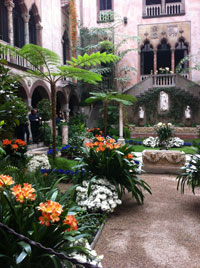 Only Brunelleschi's Id and Ego could have come up with the Duomo in Florence, or Christopher Wren's Saint Paul's Cathedral in London, or Gehry's Disney Hall, or Isabella Stewart Gardner's Italian Palazzo (in the middle of a Yankee city--Boston!) which houses the veritable contents of her entire psyche.
Only Brunelleschi's Id and Ego could have come up with the Duomo in Florence, or Christopher Wren's Saint Paul's Cathedral in London, or Gehry's Disney Hall, or Isabella Stewart Gardner's Italian Palazzo (in the middle of a Yankee city--Boston!) which houses the veritable contents of her entire psyche.
It is the Id and the Ego that stimulate the desire to perform, to paint, to act, to design, to dance, to dream, to write, to return to the imagination that made childhood a distant country where everything was done differently. It is the Id making an accomplice of the Ego that results in the artists, designers, architects, composers, writers, dancers, choreographers, film makers, thinkers, philosophers whose works change our lives, make our lives worth living, give us a handle on infinity and death and birth. It is the Id and Ego that create great institutions that serve the highest goals of our civilization -- drama companies, theaters, orchestras, museums, concert halls, dance companies.
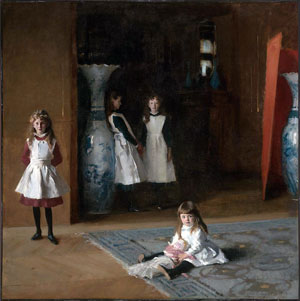 It was Beethoven's Id and Ego that gave us the great symphonies played by the Boston Symphony Orchestra and NEC Philharmonia. John Singer Sargent's Id and Ego that provides us with the astonishing collection at the Museum of Fine Arts and murals at the Boston Public Library. Shakespeare whose psyche today entertains thousands of people on Boston Common every summer, audiences enthralled by the dramatic depiction of psychological constructs that even Freud found exceptional. Icons such as the Chrysler Building and the Empire State Building are not only the signatures of the great city of New York, but also the manifestation of the Id as a most potent masculine symbol of the city, and Brooklyn Bridge as the city's most sensually feminine.
It was Beethoven's Id and Ego that gave us the great symphonies played by the Boston Symphony Orchestra and NEC Philharmonia. John Singer Sargent's Id and Ego that provides us with the astonishing collection at the Museum of Fine Arts and murals at the Boston Public Library. Shakespeare whose psyche today entertains thousands of people on Boston Common every summer, audiences enthralled by the dramatic depiction of psychological constructs that even Freud found exceptional. Icons such as the Chrysler Building and the Empire State Building are not only the signatures of the great city of New York, but also the manifestation of the Id as a most potent masculine symbol of the city, and Brooklyn Bridge as the city's most sensually feminine.
Cities have embraced the arts as their most extraordinary and most creative signatures, and those where this has happened most completely have become world-class cultural destinations:
London with the beauty of its Globe Theatre, or the Royal Albert Hall, or Lincoln's Inn Fields.
Paris, with Notre Dame emerging from the ground unbidden and seemingly unplanned but right, monumental, magnificent.
 The Blue Mosque in Istanbul, surely one of the most magnificent buildings of unspeakable grandeur on the globe.
The Blue Mosque in Istanbul, surely one of the most magnificent buildings of unspeakable grandeur on the globe.
The sublime Alhambra in Granada, Spain commanding all our senses in the clear chill of an Andalusian morning.
The giant Cloud Gate, nicknamed "The Bean," in Chicago's Grant Park created by Anish Kapoor -- just to walk around it, to touch, to see families and faces reflected -- magical.
Boston and its Library created with humanist zeal and confident splendor, to allow access to the greatest works of our civilization for everyone.
New York's Guggenheim Museum rolling in rings higher and higher in Frank Lloyd Wright's design.
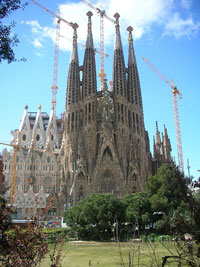 Barcelona's Gaudi Cathedral still under construction 150 years after its start, a temple resembling melting ice cream.
Barcelona's Gaudi Cathedral still under construction 150 years after its start, a temple resembling melting ice cream.
The hilltop town of Taormina in Sicily where the rock ends and the buildings begin are a blur. They have become one and you see no difference. It's the same.
Remember that architecture is frozen music, music is the written word in sound, dance is the hand maiden of music, the written word tells our story, the story of mankind, and we illustrate this all in design, and pictures, and food and wine.
We experience and enjoy the recognition of our innate selves, recognition of ourselves as artistic, creative, imaginative beings, someone who can sit in a sidewalk café in Paris staring at that most priapic of all structures, the Eiffel Tower, sipping a glass of wine thinking that life is pretty cool, with absolutely no sense of guilt. Not even a little bit.
On his special visit to Boston last week, President Obama had this to say about our beautiful city:
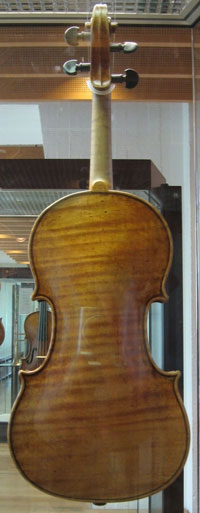 "You have great universities which year after year welcome the greatest talent in the arts, in science, in research. And there is a Boston Diaspora that excels in every field of human endeavor." We have a humanist President in a long line of humanist Presidents starting with Jefferson, celebrating the place of the arts as a vital part of our city, making it distinctive and exceptional.
"You have great universities which year after year welcome the greatest talent in the arts, in science, in research. And there is a Boston Diaspora that excels in every field of human endeavor." We have a humanist President in a long line of humanist Presidents starting with Jefferson, celebrating the place of the arts as a vital part of our city, making it distinctive and exceptional.
And that is why the creative cauldron of a city is important and why it attracts the finest and best minds to be part of its life and being. It's why Ids and Egos have come together, to form Ideas that shape our world from Cubism, Expressionism, the Bauhaus, Humanism, the Renaissance, the Enlightenment, Tom and Jerry, the movies of Alfred Hitchcock, Death of a Salesman, Italian fish soup, and the unspeakable beauty of the back of a violin made in Cremona, Italy.
The arts do not make a city. The arts are the city and without them we are left with the drab, dead monstrosities of East Germany and communist Russia where the soul of our Id and Ego have been crushed between the huge intersecting powers of an all dominating Super Ego. Let the city flourish in its love of art. Let Marilyn Monroe go down to the Charles River to play her piccolo.